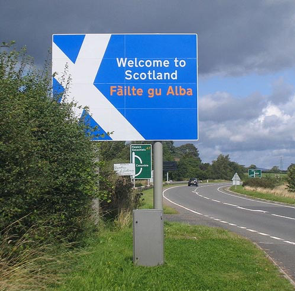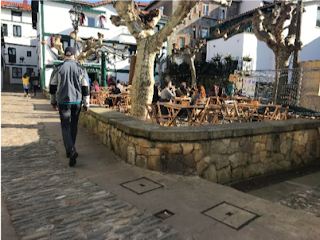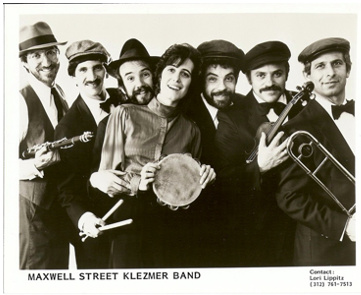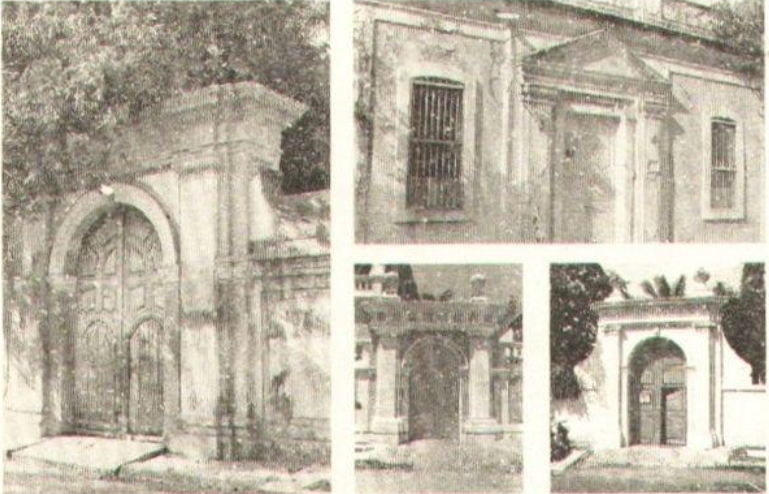Scarlet Peterson is a MA student in French Linguistics at the University of Illinois. In the future, Scarlet hopes to become a professor. She wrote this blog post in 418 'Language and Minorities in Europe' in Fall 2021.
Ever since Brexit, the Scots have been considering independence more seriously than ever. Although there is still much debate surrounding the topic (and setbacks due to COVID-19), the notion is still not far from reality. And, with the recent alliance between the Scottish National Party (SNP) and the Green Party, the political clout behind independence is stronger than ever (Dallison). Many Scots insist that, if independence from the United Kingdom was realized, they would be more capable of managing their internal affairs and preserving their identity (Learmoth). A fundamental aspect of this identity is contained within the Gaelic language, a minority language spoken by 1.7% of the Scottish people. Already spoken by a sliver of the population, this slice of Scotland is disappearing at an alarming rate, with a decrease of 5% of speakers from 2001 to 2011 alone (Campsie). Because the transmission of Gaelic has skidded to a halt in the vernacular communities, action must be taken immediately to preserve the language (Ewing). The question is: could an independent Scotland realize this goal more effectively than the status quo?
Three principal problems pose a threat to the preservation of Gaelic: a decay of the vernacular communities, a lack of education of and in Gaelic, and a paucity of meaningful venues where Gaelic is spoken regularly. If these are effectively addressed, the language will find far more stable footing than it currently has.
Historically, Gaelic-speaking individuals were related to a poor, rural, and uneducated class. For example, they were referred to with degrading names, such as “nattie” or “slicer” (Giollagáin). After the Highland Clearances, the language was repressed (Clarke 399). But, public opinion has since taken a turn, and now values the preservation of Gaelic, and furthermore, recognizes the vital role that easily-accessible education plays in that goal. This is actively supported by the SNP (Davidson). Representative McMillan, in a Scottish Parliamentary debate on the National Gaelic Plan, stated:
I welcome the additional demand for primary school Gaelic education, which has increased by 79 per cent, and the additional demand for secondary school Gaelic education, which has increased by 48 per cent. I would like more young people to have that opportunity, but it is clear that the situation surrounding the transition to secondary school is now challenging (Ewing).
The representative then goes on to discuss how finding qualified teachers will be the next stumbling block in the face of this process. But, with new Gaelic immersion schools announced in both Glasgow and Edinburgh within the past year, the future is looking bright for the language, at least in the face of early education (Swanson, Sandelands).
 |
The Sgoil Ghàidhlig Ghlaschu teaches students through Gaelic By MacSteaphain - Own work, CC BY 3.0, https://commons.wikimedia.org/w/index.php?curid=5741400 |
But, to conclude with the overall question: would an independent Scotland better face these challenges than an allied one? Considering the activity of the SNP regarding the preservation of the Gaelic language, I would suggest that there would be little, if no difference. In fact, if Scotland did decide to break from its southernly neighbor, the end would be detrimental, if only slightly so. The UK uses the Barnett formula in order to divide its annual budget—the truth of this is that it almost always favors Scotland relative to England (Learmonth). In fact, for every pound spent on an English citizen, 1.30 is spent on a Scottish citizen (Learmonth). Katy Gordon, an economy spokesperson, stated “At some stage the nationalists are going to have to admit that if they ever achieved independence they would be throwing away billions of pounds a year for public services.” Considering that much of language preservation is in public policy—such as funding vernacular communities and schools—this is not something to be taken lightly, nor divorced from the overall issue at hand. So, in the meantime, provided that Westminster maintains its distance and Scotland continues to exercise its devolved powers over education and culture, one can expect the status quo to be the most effective option available.
References
Campsie, Allison. “More Gaelic to Be Used at Scottish Government under Plan to Save ‘fragile’ Language.” The Scotsman, July 2021,
Clarke, Amy. “Should Old Acquaintance Be Forgot? The Uses of History in Scottish Nationalist Politics, 2007‐Present.” Australian Journal of Politics & History, vol. 66, no. 3, Wiley-Blackwell, Sept. 2020, pp. 396–414. Academic Search Ultimate.
Dallison, Paul. “Scottish Greens Back Coalition Deal with SNP.” Politico , 28 Aug. 2021, https://www.politico.eu/article/scotland-green-party-conference-approve-coalition-government-snp/. Accessed 20 Oct. 2021.
Davidson, Gina. “Scottish Election 2021: Gaelic Education Needs Boosted to Preserve Language, Says SNP.” The Scotsman, Apr. 2021, https://www.scotsman.com/news/politics/scottish-election-2021-gaelic-education-needs-boosted-to-preserve-language-says-snp-3201037.
Davidson, Jenni. “SNP to Explore Creation of a Designated ‘Gàidhealtachd’ as Part of Measures to Support Gaelic.” Holyrood, Apr. 2021, https://www.holyrood.com/news/view,snp-to-explore-creation-of-a-designated-gidhealtachd-as-part-of-measures-to-support-gaelic.
Ewing, Annabelle. “National Gaelic Language Plan – in the Scottish Parliament on 23rd June 2021.” TheyWorkForYou, MySociety, 23 June 2021, www.theyworkforyou.com/sp/?id=2021-06-23.28.0. Accessed 23 Sept. 2021.
Giollagáin, Conchúr Ó, and Iain Cambeul. “Chapter 8: Contemporary Sociolinguistic Profile of Gaelic in Language Planning and Policy Context: Relevance of Management Models.” The Gaelic Crisis in the Vernacular Community: A Comprehensive Sociolinguistic Survey of Scottish Gaelic, Aberdeen University Press, Aberdeen, Scotland, 2020.
Learmonth, Andrew. “Spending in Scotland 30 per Cent Higher per Person than in England Because of Barnett Formula, Says IFS.” Holyrood, 31 Mar. 2021, https://www.holyrood.com/news/view,ifs-say-barnett-formula-leaves-spending-in-scotland-30-higher-per-person-than-in-england. Accessed 20 Oct. 2021.
Sandelands, Drew. “New Gaelic Schools Set to Get Go-Ahead in Glasgow.” Glasgow Times, 24 Mar. 2020, https://www.glasgowtimes.co.uk/news/18327844.new-gaelic-schools-set-get-go-ahead-glasgow/. Accessed 20 Oct. 2021.
Smith-Christmas, Cassie. “Language and Integration: Migration to Gaelic-Speaking Areas in the Twenty-First Century.” Soillse, Soillse Project , Feb. 2014, http://www.soillse.ac.uk/wp-content/uploads/Language-and-Integration-Migration-to-Gaelic-Speaking-Areas-in-the-Twenty-First-Century.pdf.
Swanson, Ian. “Police HQ and Old Hospital in Running to Be Site of Edinburgh's New Gaelic School.” Edinburgh News, 9 Sept. 2021. https://www.edinburghnews.scotsman.com/education/police-hq-and-old-hospital-in-running-to-be-site-of-edinburghs-new-gaelic-school-3376156. Accessed 20 Oct. 2021.



















